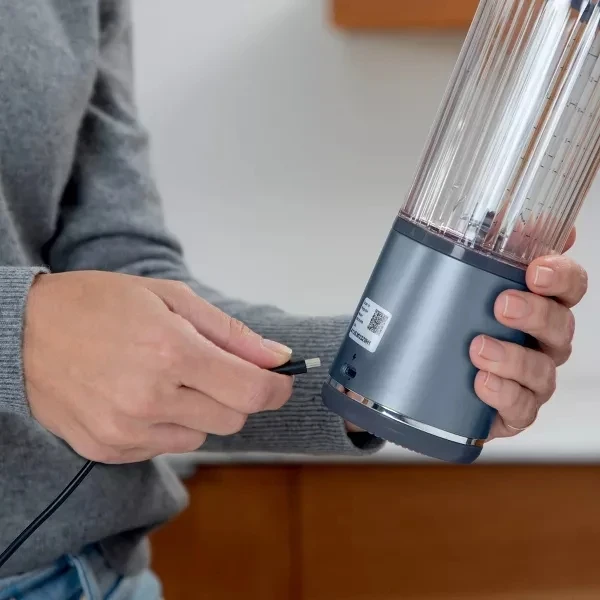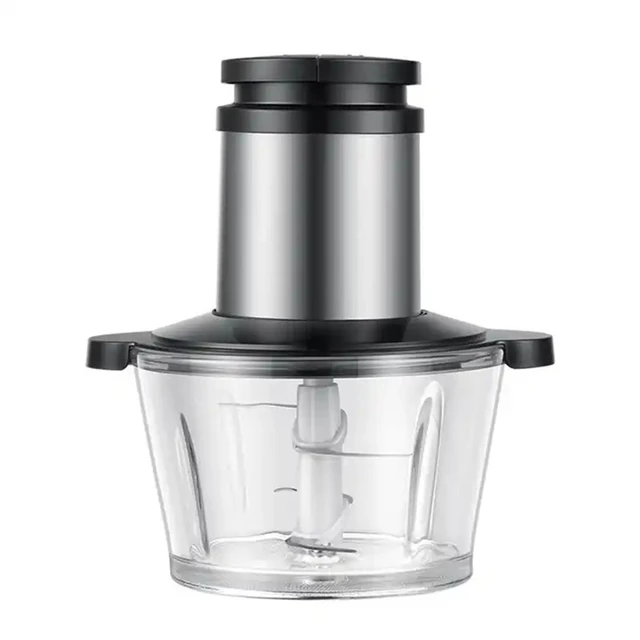
Introduction
Blenders and food processors are both versatile kitchen appliances that aid in food preparation and culinary endeavors. By understanding the capabilities and limitations of blenders, you can harness their versatility in the kitchen and make the most of this multi-functional appliance.

Can you use a blender as a food processor?
Blenders and Food Processors: Understanding the Differences
1.1. Blenders: Primary Functions
Blenders are designed to blend, puree, and liquefy ingredients, typically with the aid of high-speed blades. They excel in creating smoothies, shakes, soups, sauces, and other liquid or semi-liquid preparations. Blenders are known for their ability to incorporate all ingredients, including fiber-rich peels, seeds, and pulp, into a homogeneous mixture.
1.2. Food Processors: Primary Functions
Food processors, on the other hand, are designed specifically for food preparation tasks such as chopping, slicing, shredding, and kneading. They feature various attachments and blades that allow for different processing techniques. Food processors are known for their ability to handle larger quantities of ingredients and perform precise and controlled cutting techniques.

Tasks You Can Accomplish with a Blender
2.1. Pureeing and Blending
Blenders excel in pureeing and blending tasks, producing smooth and consistent textures. They can be used to puree fruits and vegetables for baby food, create silky smooth soups or sauces, and blend ingredients for smoothies or creamy dips.
2.2. Crushing and Grinding
Blenders with robust blades can handle tasks such as crushing ice, grinding coffee beans, or blending nuts into nut butter. The high-speed blades create enough force to break down these harder ingredients into fine textures.
2.3. Mixing and Emulsifying
Blenders are effective in mixing and emulsifying ingredients, making them suitable for creating salad dressings, marinades, or even whipped toppings. The rapid spinning of the blades combines the ingredients thoroughly and creates smooth and creamy mixtures.
Tasks that Require Adaptation or Limitations
3.1. Chopping and Shredding
While blenders can handle small chopping tasks, such as mincing garlic or chopping herbs, they are not as effective as food processors when it comes to larger-scale chopping or shredding. The blade design and container shape of blenders are optimized for blending and may not produce consistently uniform results for chopping or shredding tasks.
3.2. Slicing and Julienne Cuts
Blenders are not designed for slicing or creating julienne cuts. Food processors have specific attachments and blades that allow for precise slicing and julienne cuts, making them better suited for tasks such as preparing vegetables for stir-fries or salads.

Tips for Using a Blender as a Food Processor
4.1. Manage Batch Sizes
Blenders are typically smaller in capacity compared to food processors. When using a blender as a food processor, it is important to manage batch sizes to ensure proper processing. Working in smaller batches allows for better control and ensures that the ingredients are processed evenly.
4.2. Pulse Function
Utilize the pulse function of the blender to control the processing of ingredients. Pulsing helps achieve more controlled and consistent results for tasks such as chopping or blending ingredients.
4.3. Scraping Down the Sides
During processing, periodically stop the blender and use a spatula to scrape down the sides of the container.
4.4. Adjusting Speed and Time
Experiment with adjusting the speed and processing time to achieve the desired consistency. For blending or emulsifying, a lower speed and shorter processing time may be sufficient.
Cleaning and Maintenance
5.1. Detachable Components
Most blenders come with detachable blades and containers, making them easier to clean and maintain. After each use, dismantle the blender and wash the components with warm, soapy water.
5.2. Blade Sharpness
Regularly check the sharpness of the blades in your blender. Over time, blades can become dull, affecting their performance. Keep the blades sharp by periodically sharpening them or replacing them if necessary.

Choosing the Right Blender for Food Processing Tasks
6.1. Capacity and Power
When selecting a blender for food processing tasks, consider the capacity and power of the appliance. Opt for a blender with a larger capacity if you plan to process larger quantities of ingredients. Look for a blender with a powerful motor to handle more challenging tasks such as crushing ice or grinding nuts.
6.2. Blade Design
Blender blades come in various designs, each suited for different functions. Look for a blender with sturdy and sharp blades that can handle both blending and some food processing tasks effectively.
6.3. Attachments and Accessories
Some blenders may come with additional attachments or accessories that enhance their food processing capabilities. These attachments can include chopping blades, slicing discs, or grating blades. Consider your specific food processing needs and look for a blender that offers the appropriate attachments.
Considerations for Specific Food Processing Tasks
7.1. Dough and Baked Goods
Blenders are not well-suited for kneading dough or creating delicate baked goods that require precise control. If you frequently engage in baking activities, investing in a food processor may be a more suitable option.
7.2. Slicing and Shredding Large Quantities
When it comes to slicing or shredding large quantities of ingredients, a food processor with dedicated slicing or shredding discs will offer more efficient and consistent results. Food processors can handle a higher volume of ingredients at once, making them ideal for tasks like preparing slaw, slicing vegetables for stir-fries, or shredding cheese.
7.3. Nut Butters and Grinding
While blenders can be used to make nut butters and grind ingredients, they may require more effort and time compared to food processors. Food processors often come with precision blades and powerful motors that can efficiently process nuts, seeds, or spices into smooth pastes or powders. If you frequently make nut butters or grind ingredients, a food processor may provide more consistent and efficient results.
Benefits of Using a Blender as a Food Processor
8.1. Cost and Space Savings
Using a blender as a food processor eliminates the need to purchase and store an additional appliance, saving both money and kitchen space. Blenders are generally more affordable than food processors, making them a cost-effective option for those looking to expand their food processing capabilities without investing in a separate appliance.
8.2. Versatile and Multi-Functional
Blenders offer the advantage of being multi-functional appliances that can handle various tasks beyond simple blending. Utilizing a blender as a food processor allows for greater versatility in the kitchen, accommodating a wider range of food preparation needs.
8.3. Ease of Use and Cleanup
Blenders are typically easier to use and clean compared to food processors. The ease of use and cleanup associated with blenders make them a convenient choice for those seeking efficient and hassle-free food processing.

Conclusion
While blenders and food processors have distinct purposes, blenders can be versatile kitchen appliances that can double as food processors for certain tasks. Blenders excel in pureeing, blending, crushing, and mixing tasks, making them suitable for a range of food preparation needs. However, it is important to keep in mind the limitations and adaptability required when using a blender as a food processor. Consider the tasks you frequently perform in the kitchen, the capacity and power of the blender, and the specific attachments or accessories available to ensure optimal results. By harnessing the versatility of blenders, you can expand the capabilities of this appliance and streamline your food preparation process.